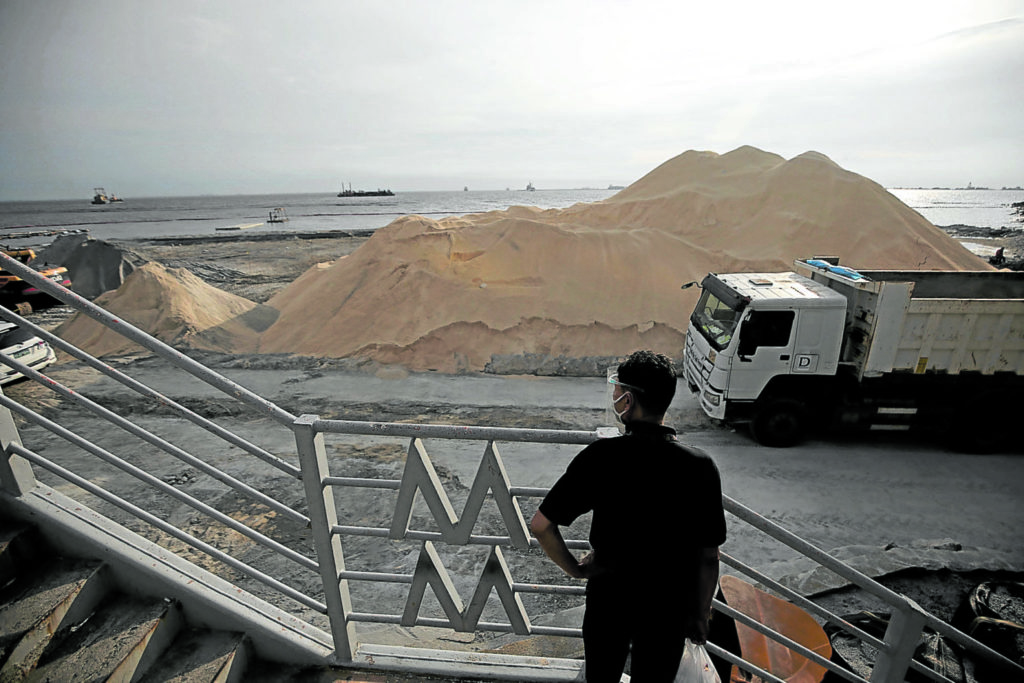
TO SAVE THE BAY A 500-meter stretch of the 190-kilometer coastline of Manila Bay will be covered with sand derived from crushed dolomite in a bid by the government to beautify the scenery and encourage the public to protect it. Environmental activists are not exactly pleased. —RICHARD A. REYES
CEBU CITY, Philippines – Criticisms directed towards the government’s initiative to transform Manila Bay into an artificially made white-sand beach continue to mount.
Environmental group Oceana Philippines, in an official statement, expressed alarm on the project. They said that it posed harm not only Manila Bay itself, but also on the site where the materials were sourced from.
READ MORE: Critics see red in Manila Bay’s ‘white sand’ makeover
“The government may not just be destroying the natural ecosystem in Manila Bay but also of the source of this white sand,” a portion of Oceana’s statement read.
“To cover the coast of Manila Bay with white sand, the government needs hundreds of tons of sand and this would have dire impacts to the coastal integrity of the source of this substrate,” they added.
Oceana Vice President and former CDN Digital columnist Gloria Estenzo Ramos was also quoted on saying that the government should stop the reclamation, and use public funds wisely.
“This will be a total waste of people’s money. Panahon na ng mga bagyo at malakas ang hampas ng alon sa Manila Bay pag may bagyo. The sand will be simply washed away by the waves and will mix with the black sand which is the natural element of this part of Manila Bay,” Ramos said.
Ramos also urged the Biodiversity Management Bureau of the Department of Environment and Natural Resources (DENR) to intervene on the project.
Oceana said reclamation projects such as the one done in Manila Bay must undergo Environmental Impact Study process, and that proponents must also secure Environmental Compliance Certificate before proceeding with the actual implementation.
“Ironically, it is the DENR that does not seem to follow the requirements set by law,” Ramos added.
In a report from the Philippine Daily Inquirer, DENR on Thursday starting pouring ”white sand” on a 500-meter stretch of the bay’s naturally gray shoreline in Manila, near the Baywalk strip along Roxas Boulevard.
DENR Undersecretary Benny Antiporda clarified that the ”sand” was actually made of crushed rocks of dolomite, a calcium magnesium carbonate, that were transported to Manila from Cebu province.
He then explained that transporting sand is illegal under Republic Act No. 7942 or the Philippine Mining Act of 1995.
Later in an interview with the Inquirer on Thursday, Antiporda could not immediately say where the dolomite was sourced, saying this aspect of the project was handled by the Department of Public Works and Highways.
Antiporda said the “beach nourishment” project cost around P349 million. A supplemental bulletin issued by the DPWH showed a higher figure of P397.9 million for the “beach nourishment, coastal restoration, and enhancement of the Manila Baywalk area.”
CDN Digital is still reaching out to DENR in Central Visayas for their comments as of this posting. /bmjo

